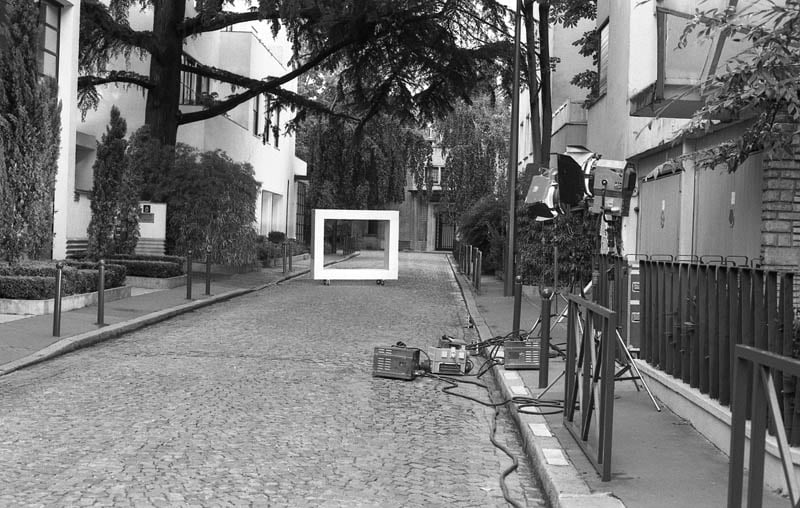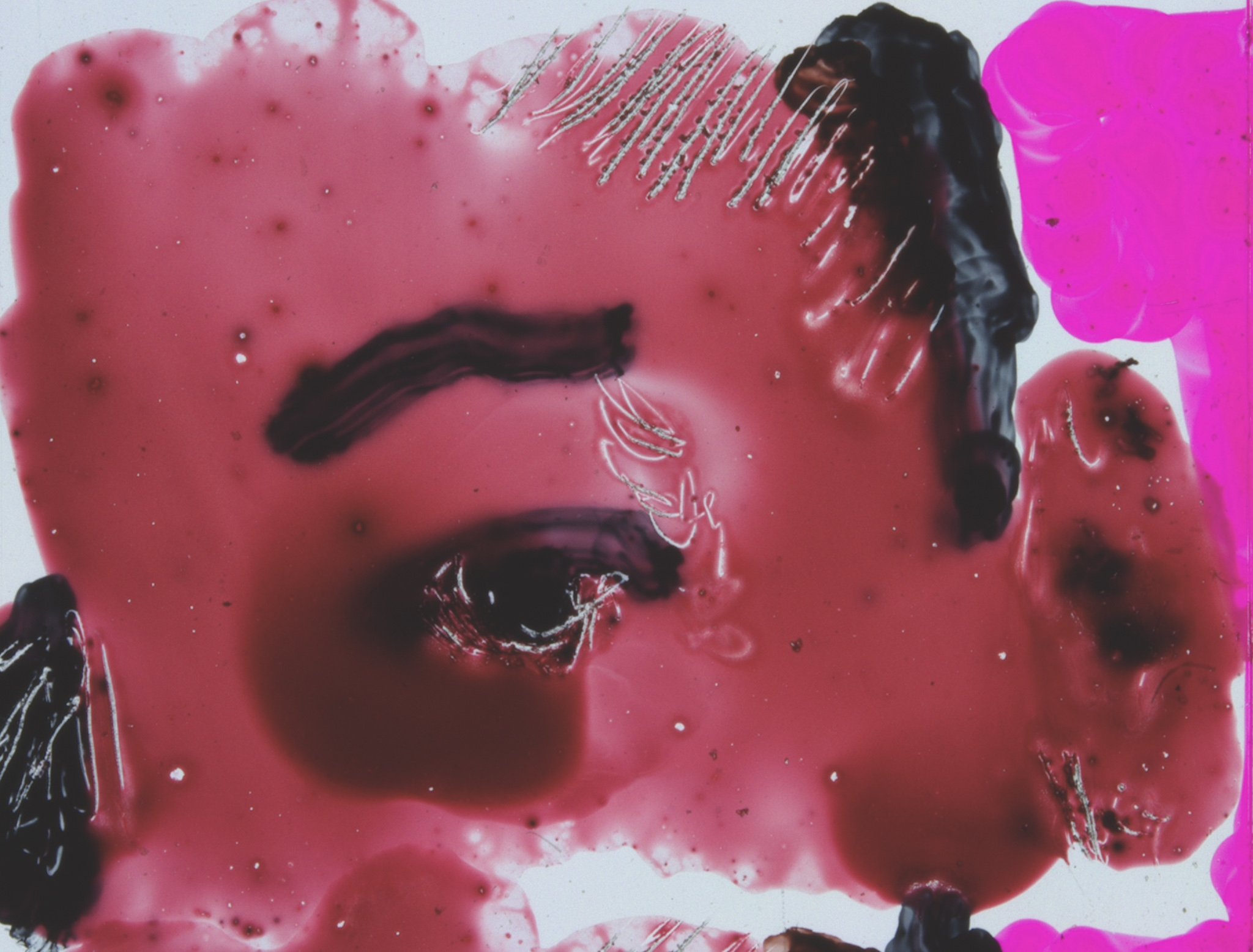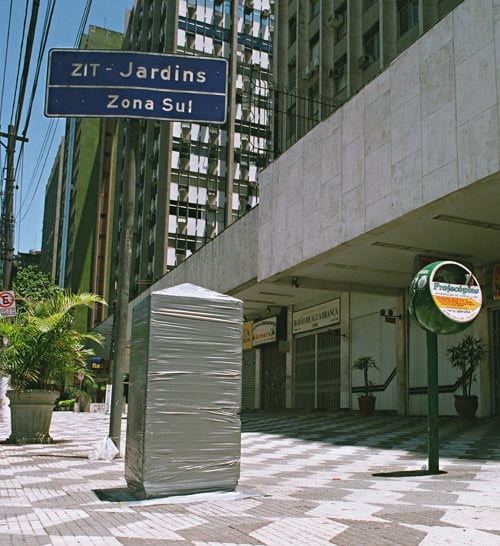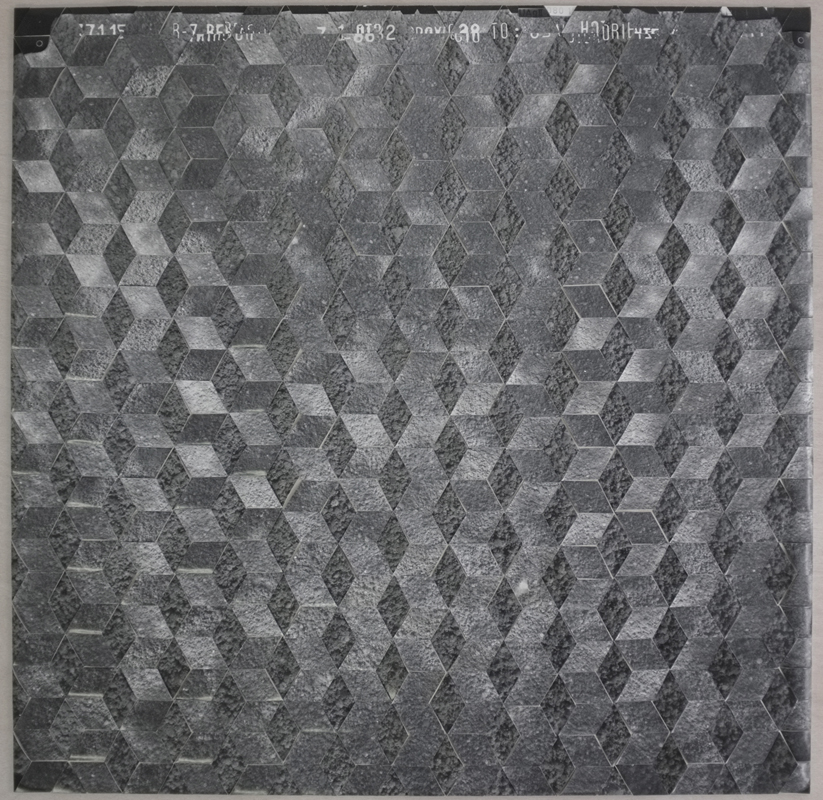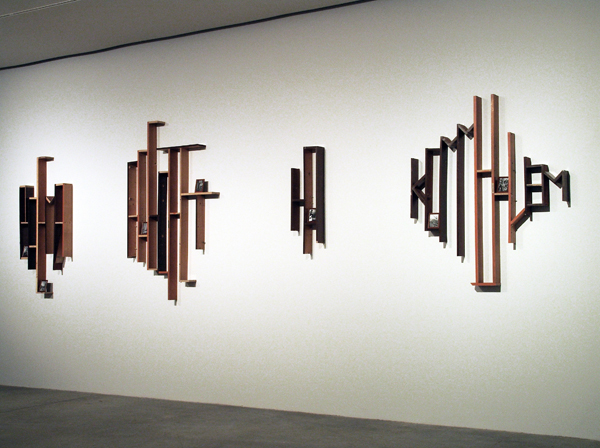
© » KADIST
Arseny Zhilyaev
Arseniy Zhilyaev (born 1984 in Voronezh, Russia) is an artist, writer and political activist who lives and works in Moscow and Voronezh. Zhilyaev’s artistic practice poses questions about the ?ultural production in the postsoviet condition. To trace Arseniy Zhilyaev’s work, one should span from the avant-garde of the 1920’s to the ‘shock therapy’ of the 1990’s in Russia.

© » KADIST
Andrea Bowers
Drawing & Print (Drawing & Print)
The small drawings that comprise Study from May Day March, Los Angeles 2010 (Immigration Reform Now) and We Are Immigrants Not Terrorists are based on photographs taken at a political rally in downtown Los Angeles in which thousands of individuals demonstrated for immigrants’ rights. The protesters and their supporters carried signs and wore t-shirts whose messages are highlighted in the drawings. However, in them, Bowers isolates the images of the protesters from the multitude that surrounds them in the original photographs, and, therefore amplifies their messages.

© » KADIST
Walead Beshty
Black Curl (CMY/Five Magnet: Irvine, California, March 25, 2010, Fujicolor Cyrstal Archive Super Type C, EM No 165-021, 05910) is a visually compelling photogram. Bold shapes, and the breaks between them, create a rhythm and compose an engaging abstract image. At the same time, the work deals with the conditions of the photograph’s manufacture.

© » KADIST
Marcelo Cidade
Marcelo Cidade’s sculpture Abuso de poder (Abuse of Power, 2010) is a mousetrap elegantly crafted in Carrara marble. Originally made for the Carrara Biennale in 2010, it re-creates the iconic form down to the piece of cheese waiting for an unsuspecting victim. In this sculpture, Cicade challenges the viewer’s participation and intervention into the artistic object.

© » KADIST
Erick Beltran
Drawing & Print (Drawing & Print)
In his posters, prints, and installations, Erick Beltrán employs the language and tools of graphic design, linguistics, typography, and variations in alphabetical forms across cultures; he is specifically interested in how language and meaning form structures that can be misconstrued as universal. In The Individual Is a Mirage (2010), Beltrán offers up a graphic chart mapping the myth of individual identity.

© » KADIST
James T. Hong
Taiwan WMD (Taiwan and Weapons of Mass Destruction) is part of a long-term research started in early 2010 on the history and aftermath effects of Japanese biological and chemical warfare in China during WWII, as well as the unknown history of Taiwan’s nuclear program. T. Hong’s research is not only an effort to revisit a dark time that complicates certain histories, but more importantly an investigation of how violence is enacted in the name of rationality.

© » KADIST
Matt Lipps
In the series Horizons (2010), Lipps uses appropriation to riff on Modernism’s fascination with abstract form. For Untitled (Men) (2011), he snipped from magazines and textbooks pictures of handsome or famous men, from the ancient Greek to the modern. Arranged in a tableau, lit theatrically, and rephotographed, the two-dimensional figures have an embodied presence.
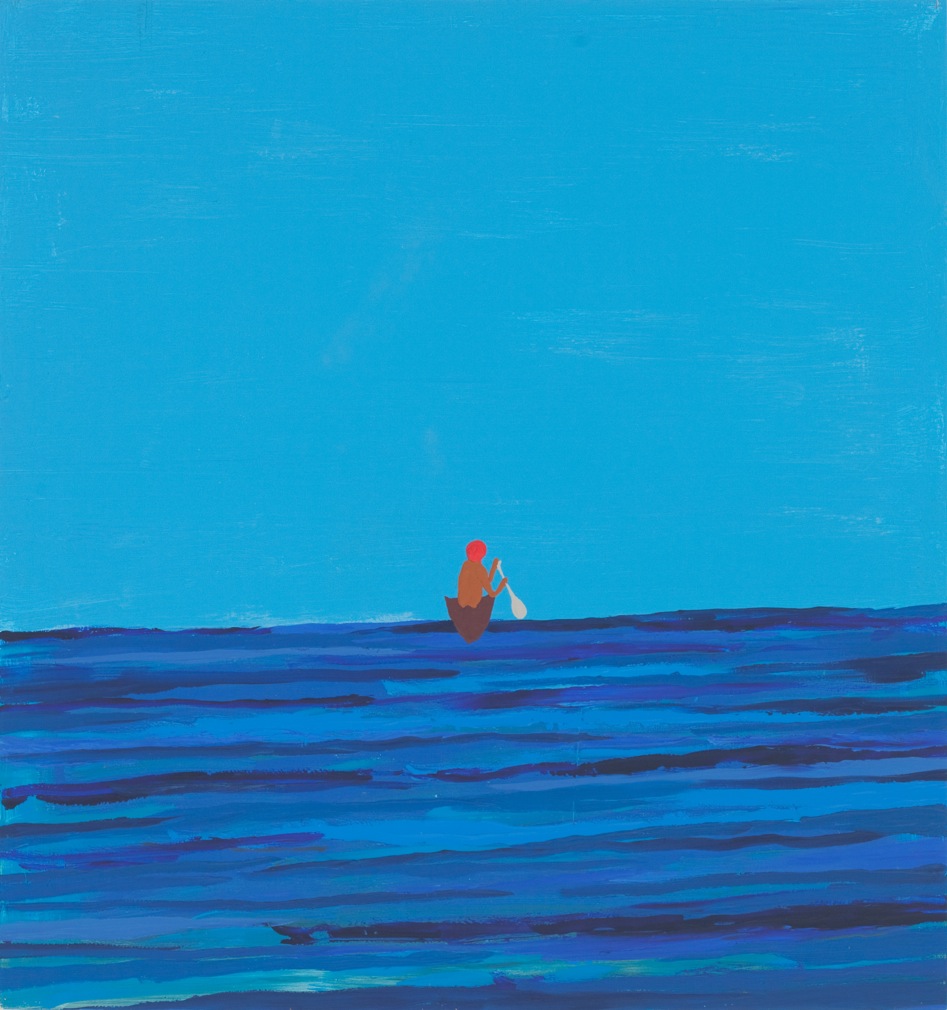
© » KADIST
Chris Johanson
Chris Johanson’s Untitled (Painting of a Man Leaving in Boat) (2010) pictures a canoe drifting toward an off-kilter horizon line, which demarcates the cobalt sea from the cerulean sky. An orange-haired figure, oar positioned in mid-stroke, looks ahead—whether toward an edge or an infinite expanse, it is impossible to tell. Echoing a trope that recurs in Greek epic poetry, transcendental painting, and current-day reality television, the character is alone with nature.

© » KADIST
Leung Chi Wo and Wong Sara
Photojournalist with Two Cameras restages a portrait of a photojournalist from the background of an old photograph of protest published in South China Morning Post on January 10, 2010 under the headline “Return of the Radicals: Recent angry protests are nothing new.” The photojournalist in the photograph, probably from a protest of earlier decades, was capturing the scene of a protester’s arrest while wearing two cameras. January of 2010 was a time of pro-Democracy demonstrators called for the release of activist Liu Xiaobo, drafter of the Charter 08 manifesto calling for the end of authoritarian rule, was sentenced to 11 years in prison one month earlier. Leung’s isolating and highlighting of the photographer by bringing him from the original photograph’s background to the foreground of his studio shot calls attention to the two older cameras and the journalist’s retro-style clothing.

© » KADIST
Robert Zhao Renhui
Changi, Singapore, possibly 1970s is from the series “As We Walked on Water” (2010-2012), which looks into Singapore’s history around the phenomenon of land reclamation. After exhausting the country’s own soil from its tiny hills and ridges, the government had to buy sand from Malaysia and Indonesia to continue its reclamation efforts. At the early stages of a land reclamation project, the imported sand would sit idle for some time, forming an artificial desert-like landscape.

© » KADIST
Yusuke Yamatani
In his series Tsugi no yoru e (Onto the next night) , 2010, Yamatani gives viewers access to the wild world of young rockers and skaters. He prints their idiosyncratic life in ferrotyped gelatin silver prints. Using this forgotten printing process to depict his generation, he manages successfully to reevaluate a classic approach with a fresh understanding of it.

© » KADIST
Tim Lee
Part of Tim Lee’s practice involves envisioning himself reenacting key moments from iconic peoples’ lives. In the photograph Untitled (Stanley Kubrick, 1945) (2010), Lee re-creates a self-portrait by Stanley Kubrick from 1945. Kubrick shot the original photograph in the mirror when he was just beginning his career as a photojournalist.

© » KADIST
Heman Chong
The work Calendars is composed of 1001 images of deserted public areas in Singapore printed on pages of a calendar set from the year of 2020 until 2096. Yet Chong photographed these public spaces (shopping centers, museums, MRT stations and schools) between 2004 and 2010. Calendars continues Hong’s conceptual investigation of the intersections between time, space and situation.

© » KADIST
Werner Herzog
Commissioned for the 2012 Whitney Biennial, Hearsay of the Soul (2012) is Werner Herzog’s ode to the landscape paintings of the 17th-century Dutch artist Hercules Segers. The work is a four-channel digital projection of Segers’s artworks accompanied by the emotive music of the Dutch cellist and composer Ernst Reijseger. Herzog sees Segers’s vast landscapes as powerful representations of our own interior worlds, resounding with feelings of anger, joy, fear, and loneliness.

© » KADIST
Hamra Abbas
At first glance, Cityscapes (2010) seems to be a collection of panoramic photographs of the city of Istanbul—the kind that are found on postcards in souvenir shops. A closer examination, however, reveals that a key element—the minaret—has been systematically removed, thereby changing profoundly the history and religious character of the city. The work is a response to a November 2009 referendum in Switzerland that approved a ban on the construction of new minarets in that country.

© » KADIST
Carlos Garaicoa
From the series the Old and the New (XI) by Carlos Garaicoa belongs to the series Lo viejo y lo nuevo / Das Alte und das Neue (The Old and the New) which was first exhibited in 2010 at Barbara Gross Gallery in Germany. Here, Garaicoa’s interest in vernacular Cuban architecture shifts towards the European context: a series of twelve nineteenth-century French engravings have been reworked into delicate paper models. Here, the two-dimensional old-school architectural renderings have become the foundation for new hollow three-dimensional structures.

© » KADIST
Woto Wibowo
Vertical Horizon by Wito Wibowo addresses a media scandal in 2010 that took over the cultural milieu of Indonesia. Someone uploaded on a sextape of pop star Ariel Peterpan with model-actress Luna Maya recorded on a mobile phone. Several days later, another video of Ariel Peterpan and Cut Tari, an infotainment news presenter in Indonesia, surfaced on the Internet.
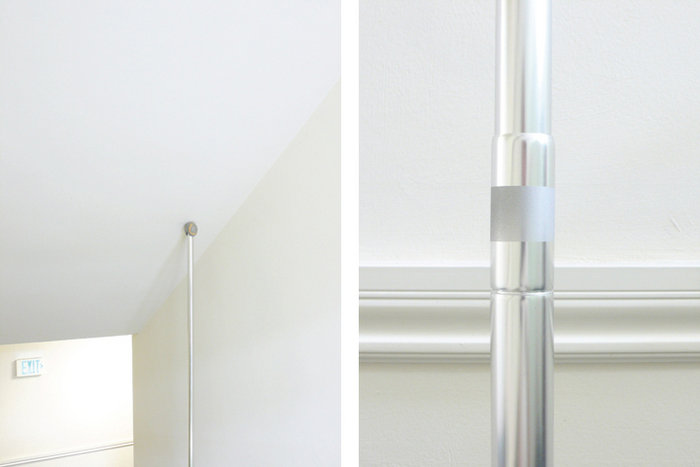
© » KADIST
Chadwick Rantanen
Telescopic Pole is an adjustable telescopic pole that extends vertically from floor to ceiling and is held up by its own internal pressure. The ends, protected by two, cut-open tennis balls, recall the legs of a walker. For Rantanen’s second solo exhibition at Jancar Jones Gallery, San Francisco in 2010, one pole was placed inside the gallery while the other was located outside.

© » KADIST
Chen Chieh-Jen
Empire’s Borders II – Passage and Empire’s Borders II – Workers are from the three-channel film installation Empire’s Borders II – Western Enterprise, Inc. (2010), which takes as its point of departure the political context of the 1950s and the Cold War, when American interests in Taiwan overlapped with the Chinese civil war. Cooperating with the Chinese Kuomintang, the American CIA established something called Western Enterprises, an agency whose main tasks included training an anti-Communist National Salvation Army (NSA) for a surprise attack on Communists in mainland China and establishing Taiwan as a base for anti-Communist operations in Southeast Asia. Narrated from the point of the view of the artist’s father, once a member of the NSA, the project interweaves personal experience with historical events.

© » KADIST
Nikita Kadan
Drawing & Print (Drawing & Print)
Ukraine is under tension due to the politics of President lanoukovitch since 2010. Numerous passive demonstrations against the government have led to numerous police repression of the protestors. The demonstration ‘Euromaïdan’ in 2013 is a perfect example.
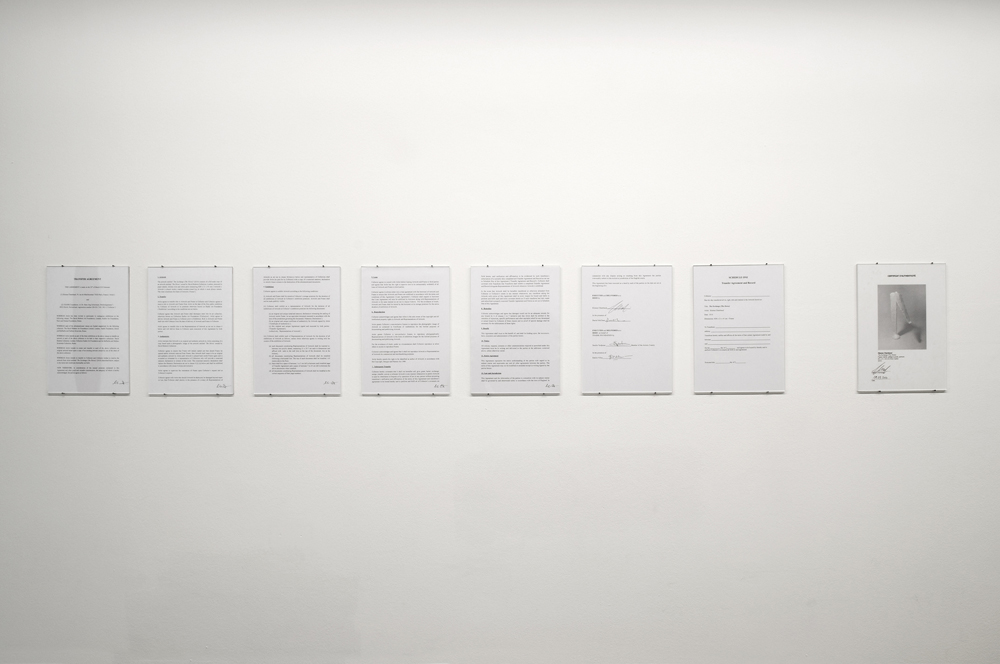
© » KADIST
Étienne Chambaud
Drawing & Print (Drawing & Print)
In 2010, Kadist Art Foundation, David Roberts Foundation and Nomas Foundation successively presented an exhibition of the work of Etienne Chambaud in collaboration with Vincent Normand: The Siren’s Stage / Le Stade des Sirènes. For this project, Etienne Chambaud made The Exchange (The Horse) . A contract was written with the lawyer Daniel McClean to establish the conditions for the exhibition and conservation of copies of the sculptures exchanged between the collections of these three foundations.

© » KADIST
Chen Chieh-Jen
Empire’s Borders II – Passage and Empire’s Borders II – Workers are from the three-channel film installation Empire’s Borders II – Western Enterprise, Inc. (2010), which takes as its point of departure the political context of the 1950s and the Cold War, when American interests in Taiwan overlapped with the Chinese civil war. Cooperating with the Chinese Kuomintang, the American CIA established something called Western Enterprises, an agency whose main tasks included training an anti-Communist National Salvation Army (NSA) for a surprise attack on Communists in mainland China and establishing Taiwan as a base for anti-Communist operations in Southeast Asia. Narrated from the point of the view of the artist’s father, once a member of the NSA, the project interweaves personal experience with historical events.

© » KADIST
James T. Hong
Lessons of the Blood by James T. Hong pieces together interviews, extensive archival and field research, and TV footage addressing Japan’s use of biological warfare and experimentation on Chinese prisoners during World War II, as well as the revisionism of the Japanese government and Chinese survivors’ attempts to live with this horrific history and to find justice. Co-written, directed, edited and produced with Yin-Ju Chen, whose work is also represented in the Kadist collection, Lessons of the Blood is a meditation on propaganda, the ways in which national mythologies can literally infect and poison the most vulnerable among us, and the legacy of World War II in China, presented through the testimonies of survivors, academics, medical experts, nationalists and activists. The film locates its genesis in the publication of the New History Textbook in Japan in 2000, which infamously glossed over the Japanese Empire’s wartime atrocities, sparking rage and violent protests in China and South Korea in 2005.

© » KADIST
Marcelo Cidade
Adição por subtração 4 (Addition by Subtraction, 2010) is an intervention into the white cube with both beautiful and intimidating results. The installation is a large rectangular frame created out of shards of clear and colored glass that protrude from the wall. The use of glass fragments is reminiscent of Robert Smithson’s sculpture Map of Glass (Atlantis) (1969), yet the concerns here are very different.
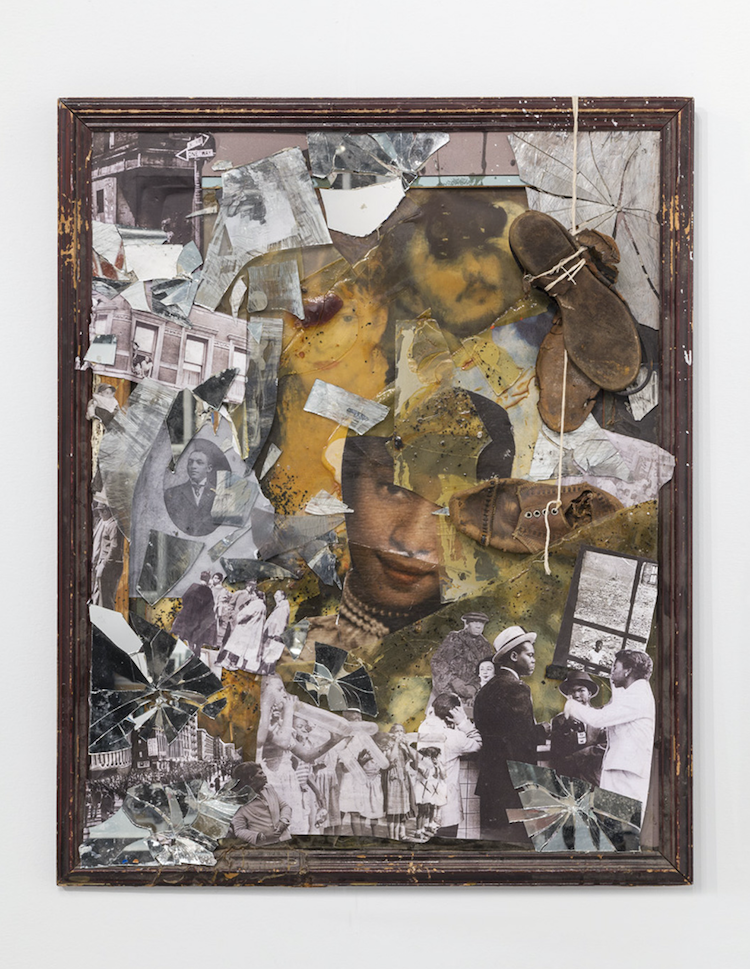
© » KADIST
Abigail DeVille
The work La Loge Harlem focuses on the history of Harlem and its development over the last 200 years. It was a playground for the rich in the 19th century and where Old New York had its summer homes and diversions. The center image is a portrait of the artist’s grandmother when she was 16 in 1949.

© » KADIST
Nikita Kadan
Drawing & Print (Drawing & Print)
Ukraine is under tension due to the politics of President lanoukovitch since 2010. Numerous passive demonstrations against the government have led to numerous police repression of the protestors. The demonstration ‘Euromaïdan’ in 2013 is a perfect example.
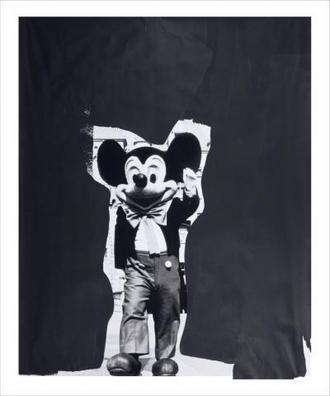
© » KADIST
Paul McCarthy
Drawing & Print (Drawing & Print)
To make Mickey Mouse (2010), Paul McCarthy altered a found photograph—not of the iconic cartoon, but of a man costumed as Mickey. On his shoulders he supports an enormous false head, Mickey’s familiar face grinning with glossy eyes. The artist has marked out in heavy black the background of Cinderella’s castle.

© » KADIST
Haegue Yang
A steel clothing rack adorned with turbine vents, Moroccan vintage jewelry, pinecones and knitting yarn, these heterogeneous elements are used here to create an exotic yet undefined identity within the work. Following Haegue Yang’s 2010 anthropomorphic series Medicine Men, this sculpture appears as a shamanic objet or being. It is mobile and can be activated.

© » KADIST
Reyes Santiago Rojas
The work Sarta (String) by Reyes Santiago Roja is part of a larger series of works that examine the commercialization of the tobacco plant and its relationship to the meaning and use of tobacco by Native American tribes such as the Mayas, Aztecs, Incas or Tainos, which attributed spiritual qualities to tobacco such as the smoke carrying one’s thoughts and prayers to the sprits. In this work the artist studied the forms of tobacco leaves native to Latin America and recreated their shapes with commercial tobacco packaging from such global brands as Marlboro or Camel to the most popular Colombian brand Pielroja. The leaves made of the packaging material are lined up on a string as if they are hung out to dry as in traditional tobacco making processes.

© » KADIST
Chemi Rosado-Seijo
Map of the Universe from El Cerro continues Chemi Rosado-Seijo’s long-term engagement with the community of El Cerro , a rural, working-class community living in the mountains of Naranjito, Puerto Rico. The project was initiated in 2002 by painting the exteriors of residents’ homes different shades of green, paying homage to the way the community has been built in harmony with the topography of the mountains where it stands. Through negotiation and collaboration with community leaders, volunteers, students and residents, over 100 homes have been painted.
Xyza Cruz Bacani
Xyza Cruz Bacani is a Filipina author and photographer who uses documentary-style photography to call attention to less visible, erased, and under-reported global events...
Nikita Kadan
Trained in large-scale painting, Nikita Kadan’s artistic practice encompasses installation, graphics, painting, wall drawing, and urban postering, sometimes in collaboration with architects, human rights activists, and sociologists...
Gan Chin Lee
Gan Chin Lee is a Malaysian artist of Chinese descent known across Southeast Asia for his realist paintings that painstakingly register the ethnic and religious complexities of Malaysia...
Charlotte Moth
Charlotte Moth has been constituting an image bank since 1999...
Diego Marcon
Diego Marcon uses film, video and installation to investigate the ontology of the moving image, focusing on the relationship between reality and representation...
Sung Hwan Kim
In his practice, Sung Hwan Kim assumes the role of director, editor, performer, composer, narrator, and poet...
Nazgol Ansarinia
- location: Tehran, Îran
- year born: 1979
- gender: female
- nationality: Iranian
Haegue Yang
- location: Berlin, Germany & Seoul, South Korea
- year born: 1971
- gender: female
- nationality: Korean
- home town: Seoul, South Korea
Clarissa Tossin
- location: Los Angeles, California
- year born: 1973
- gender: female
- nationality: Brazilian
- home town: Porto Alegre, Brazil
Chen Chieh-Jen
- location: Taipei, Taiwan
- year born: 1960
- gender: male
- nationality: Chinese
- home town: Taoyuan, Taiwan
Will Rogan
- location: Albany, California
- year born: 1975
- gender: male
- nationality: American
Camel Collective
Camel Collective comprises the artists Carla Herrera-Prats (Mexican, photographer and conceptual artist) and Anthony Graves (American, painter), who began working together in 2005 during a fellowship at the Whitney Independent Program...
Gozo Yoshimasu
Gozo Yoshimasu is a prolific Japanese poet, photographer, artist and filmmaker active since the 1960s...
Andrew Norman Wilson
Andrew Norman Wilson is an artist, curator, and filmmaker whose practice is mostly based in research and documentary...
Rometti Costales
Rometti Costales is an artistic collaboration between Julia Rometti and Victor Costales that began in 2007...
Nidhal Chamekh
Based between his native Tunis and Paris, Nidhal Chamekh’s work is an investigation into history as a point of access to our contemporary times...
James T. Hong
James T...
Siavash Naghshbandi
Siavash Naghshbandi has long been interested in computer systems and the approaching horizon of Artificial Intelligence...
Shilpa Gupta
- location: Mumbai, India
- year born: 1976
- gender: female
- nationality: Indian
- home town: Mumbai, India
Aykan Safoglu
Aykan Safoglu is a Turkish-German artist whose works cultivate relationships among cultural, geographical, linguistic, and temporal boundaries...
Michael Rakowitz
Michael Rakowitz uses the novel charm of everyday things to excite new and oblique approaches to loaded geopolitical subject matter...
Kiluanji Kia Henda
A self-taught artist, Kiluanji Kia Henda employs a strong sense of humour in his work, which often hones in on themes of identity, politics, and perceptions of post-colonialism and modernism in Africa...
Indira Allegra
Indira Allegra uses text and textile production—a combined material they designate as a “text/ile”—to embody unseen forces like memory, haunting, grief, and emotions born from trauma...
Jiang Zhi
- location: Beijing
- location: Shenzhen, China
- year born: 1971
- gender: male
- nationality: Chinese
- home town: Yuanjiang, China
Tanatchai Bandasak
Artist Tanatchai Bandasak began his career as a filmmaker, however following his studies at art school in France, he began exploring installation and sculptural strategies for presenting moving images...
Julian Hoeber
- location: Los Angeles, California
- year born: 1974
- gender: male
- nationality: American
- home town: Philadelphia, Pennsylvania
Matthew Angelo Harrison
Detroit’s Matthew Angelo Harrison works at the intersection of sculpture and technology, building his own 3D printers (which rise to the status of sculpture), and using these creations to formulate others...
Ali Yass
Ali Yass is a painter and filmmaker whose work entangles personal and collective memory in its psycho-affective interrogation of power...
Yung Jake
Yung Jake is a visual artist and YouTube rapper based in Los Angeles whose work fuses new media, music, and art...


